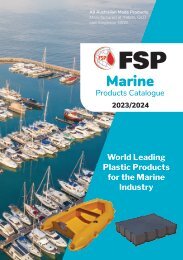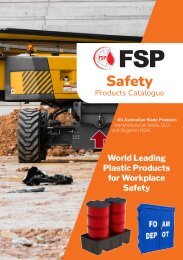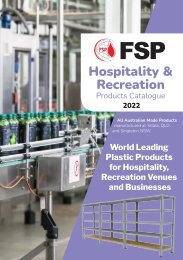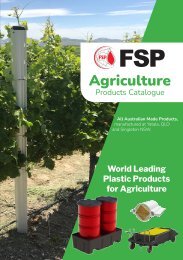Copper Alliance HSDG Australia
You also want an ePaper? Increase the reach of your titles
YUMPU automatically turns print PDFs into web optimized ePapers that Google loves.
Limitations of <strong>Copper</strong> Tubes – Corrosion<br />
Balanced water chemistry is important to the corrosion resistance of copper piping.<br />
History Of <strong>Copper</strong> Plumbing Systems<br />
<strong>Copper</strong> tube is recognised as a reliable<br />
material for plumbing water supply and<br />
sanitary systems due to its successful &<br />
widespread international usage. <strong>Copper</strong> has<br />
been used in plumbing systems worldwide<br />
for over 100 years. There have been a small<br />
number of cases where copper plumbing<br />
has suffered premature failure from pitting or<br />
discolouration of water due to the presence<br />
of copper species from corrosion or effects<br />
from the external environment.<br />
Research undertaken over recent years<br />
has demonstrated that water chemistry<br />
is the primary factor influencing these<br />
failure processes. The other significant<br />
contributing factor is design and installation<br />
issues such as pipe sizing, flow rates or<br />
contact with incompatible materials such as<br />
aggressive soils.<br />
Balanced water chemistry is important to<br />
the corrosion resistance of copper piping.<br />
Transient conditions may either prevent the<br />
formation of uniform, protective, internal<br />
films, or cause irreparable damage.<br />
<strong>Copper</strong> water piping achieves its longevity<br />
through the development of a stable<br />
protective internal surface film. Corrosion<br />
may occur if either an unstable film forms, or<br />
a protective film is interfered with during the<br />
installed life of the water pipe.<br />
Types of <strong>Copper</strong> Corrosion<br />
Microbiologically Influenced Corrosion<br />
(MIC)<br />
The MIC mechanism involves the presence<br />
of a biofilm which has the capability of<br />
adhering itself to a metal surface.<br />
When biological material lodges on the metal<br />
surface, it forms concentration cells due<br />
to the development of micro colonies of<br />
bacteria (Figure 6.1). A pH gradient is<br />
established within the region, with a lower pH<br />
produced at the film layer close to the metal,<br />
which corrodes.<br />
It is important to note that:<br />
• The formation of biofilms is related to<br />
water chemistry not the metal.<br />
• International investigations have shown<br />
copper to have superior resistance to<br />
the impact of bacteria compared to<br />
alternative piping materials.<br />
MIC generally affects only cold water (Figure<br />
6.1), and is more likely in untreated water<br />
supplies. Hot water systems where the water<br />
is maintained above 60 0 C and treated water<br />
where a disinfectant level is maintained<br />
(residual free chlorine) do not suffer from MIC.<br />
Water composition, systems design,<br />
commissioning, and on-going compatible<br />
operating conditions are all critical to the<br />
development and retention of protective<br />
films, and long term satisfactory performance<br />
of copper.<br />
Figure 6.1<br />
MIC Corrosion – Cold Water<br />
Hydraulic Services Design Guide - 5 th Edition March 2022<br />
Chapter Six<br />
44<br />
www.copper.com.au


















